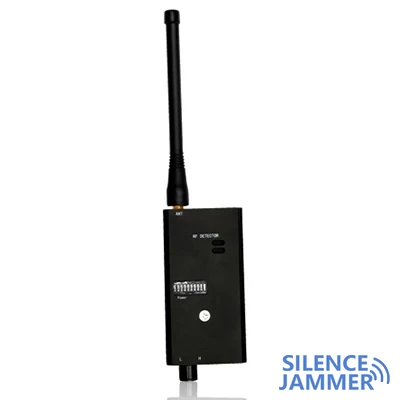With the rapid development of drone technology, DJI drones have become the leader in the market with their excellent performance and wide range of applications. However, with the popularity of drones, effective management and control of drones has become increasingly important. Understanding the signal frequency band of DJI drones and choosing a suitable drone signal jammer are important steps to ensure security and privacy.

DJI drone product signal frequency band
DJI drones usually use the following main frequency bands to communicate:
2.4 GHz band: This is one of the most commonly used frequency bands and is used by most wireless communication devices. DJI drones use this frequency band for control signal and video transmission.
5.8 GHz band: This band is less susceptible to interference and is often used for video transmission, especially when the 2.4 GHz band is too crowded.
900 MHz frequency band: Some professional-grade drones use this frequency band for long-range communication to achieve longer communication distance and better penetration capabilities.
1.2 GHz frequency band: This frequency band is mainly used for video transmission, especially in professional photography and surveillance drones.
Understanding these frequency bands is critical to choosing the right drone jammer.
Key Factors in Choosing a Drone Jammer
Selection of interference frequency bands: According to the working frequency band of DJI drones, select jammers that can cover the 2.4 GHz, 5.8 GHz, 900 MHz and 1.2 GHz frequency bands to ensure that it can effectively interfere with various types of DJI drones.
Jammer Power: The power of a jammer determines its effective range. For scenarios that require interference in a large range, such as airports, military bases, etc., high-power jammers should be selected. In small areas, such as private homes or conference rooms, low-power jammers are sufficient.
Mobility and portability: Choose from fixed, portable or handheld jammers depending on the use scenario. Stationary jammers are suitable for long-term deployment, while portable and handheld jammers are suitable for temporary use and rapid response.
Legal Compliance: Always comply with local laws and regulations when selecting and using a jammer. Most countries have strict regulations regarding the use of jammers, and illegal use may result in legal liability.
Application scenario analysis
Airports and no-fly zones: In these areas, fixed jammers with high power and wide coverage are needed to ensure that drones cannot enter the no-fly zone and ensure flight safety.
Military bases and critical facilities: These areas require portable jammers that can be deployed quickly and operate efficiently to ensure that jamming can be started quickly in an emergency.
Private residences and businesses: In these locations, low-power handheld or portable jammers can effectively prevent drone surveillance or harassment without causing too much impact on the surrounding environment.
Public events and gatherings: At large public events, the use of portable jammers can prevent drones from flying within the event area, ensuring the safety and privacy of participants.
Understanding the signal frequency bands of DJI drones and how they work is crucial to choosing a suitable drone jammer. By comprehensively considering interference frequency band, power, mobility and legal compliance, the most suitable jammer can be selected to ensure effective control of drones in different scenarios. At the same time, using jammers reasonably and legally can not only ensure security and privacy, but also avoid unnecessary legal risks.


